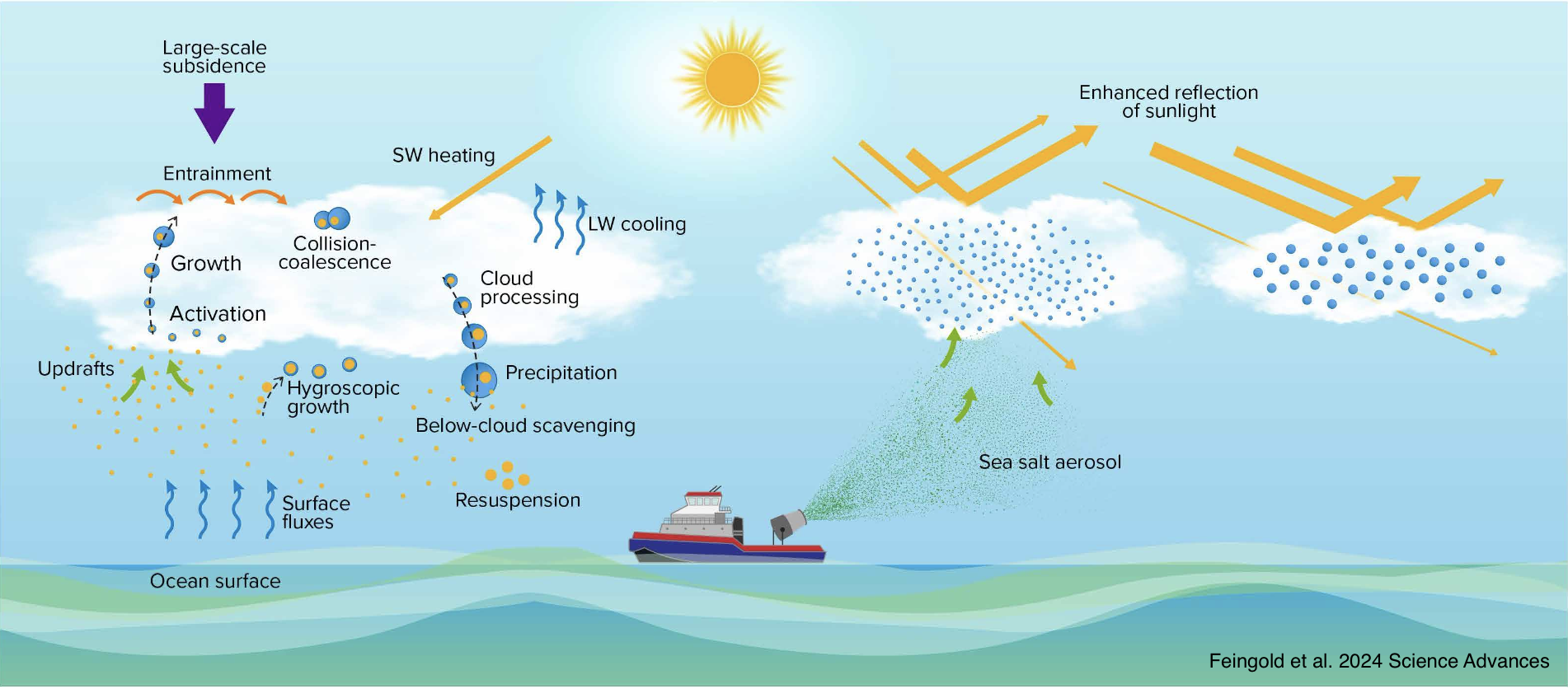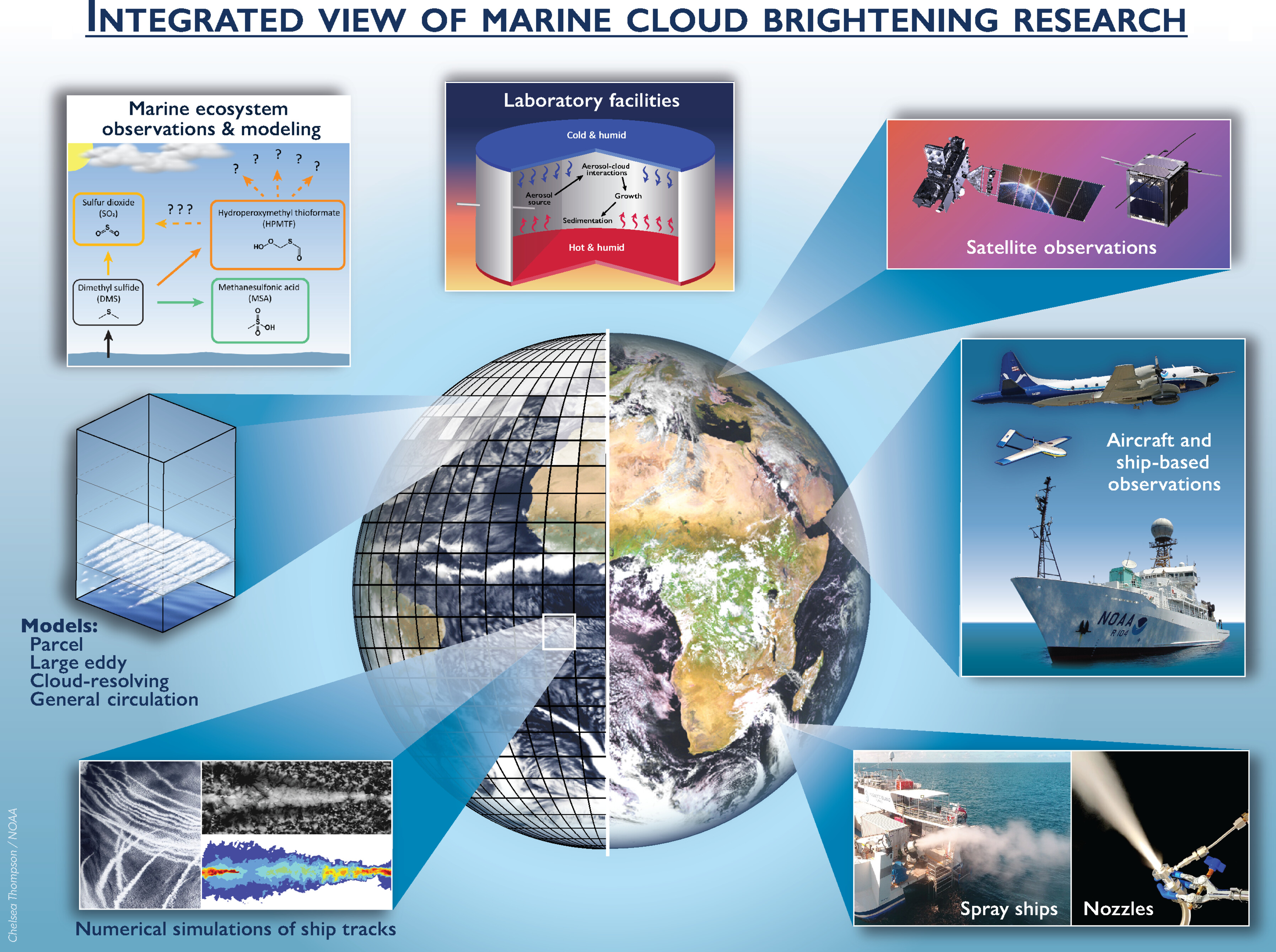Physical Science Reseach for Marine Cloud Brightening
As evidence for severe impacts of global warming continues to accumulate, the possibility of averting the worst effects of climate change through climate intervention (CI) is a topic of increasing scrutiny and debate. The common goal of these CI proposals is to cool the climate by deliberately modifying the solar (shortwave) or terrestrial (longwave) radiation pathways in the Earth’s atmosphere, aiming to reduce the worst impacts of rising global temperatures, in addition to reducing greenhouse gas (GHG) emissions. Marine Cloud Brightening (MCB), one such CI proposal, focuses on enhancing the reflection of solar radiation by warm (liquid containing) marine clouds through the deliberate injection of sea salt particles into these clouds.
The Overview Our papers lay out physical science knowledge and gaps on MCB and discuss research needed to assess the viability and risks of MCB. In particular, we focus on How does it work, in theory? (underlying physical processes), Viability at scale, Feasibility-from nozzle design to large-scale deployment (the contingencies), and Risks-known and unknown associated with MCB proposals.


Related Publications
-
J. Zhang and G. Feingold (2024): Physical Science of Marine Cloud Brightening: Knowledge and Gaps, in Topical Group on the Physics of Climate, American Physical Society, October 2024, pp. 1–4. (invited article)
-
G. Feingold, V. Ghate, L. Russell, et al. including J. Zhang (2024): Physical science research needed to evaluate the viability and risks of marine cloud brightening. Sci. Adv., 10(12), eadi8594. doi:10.1126/sciadv.adi8594
Enjoy Reading This Article?
Here are some more articles you might like to read next: